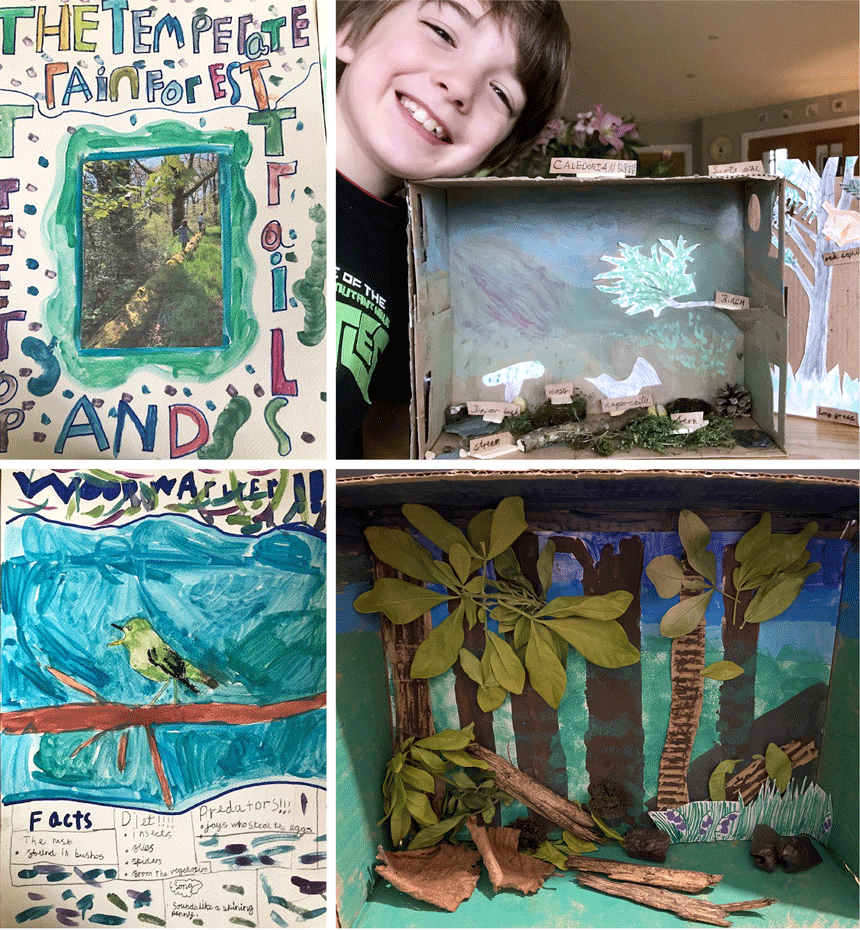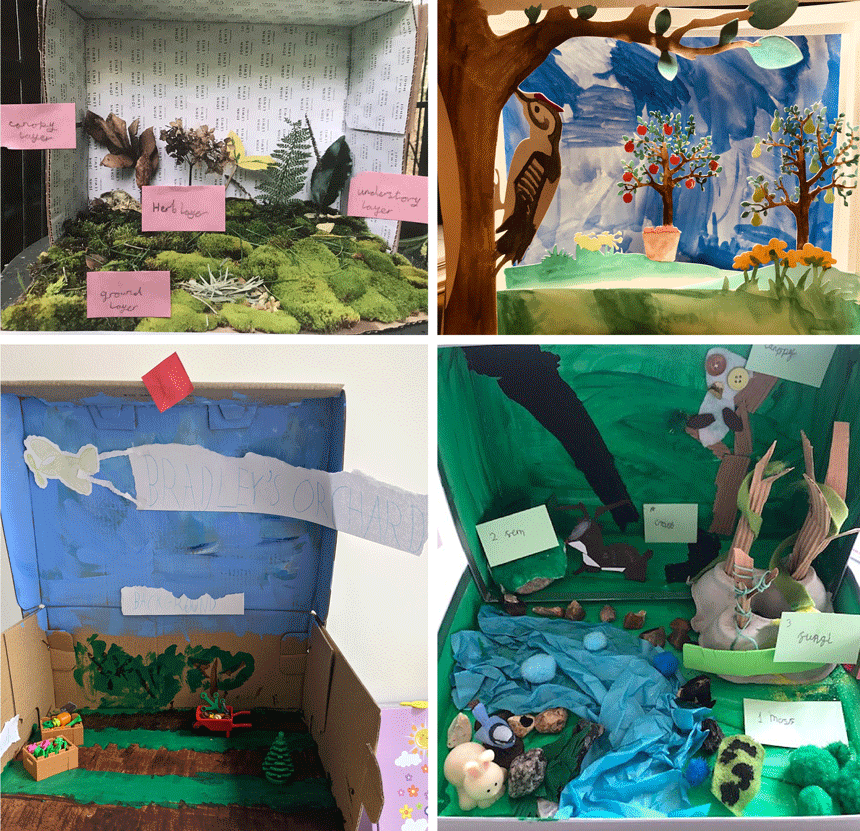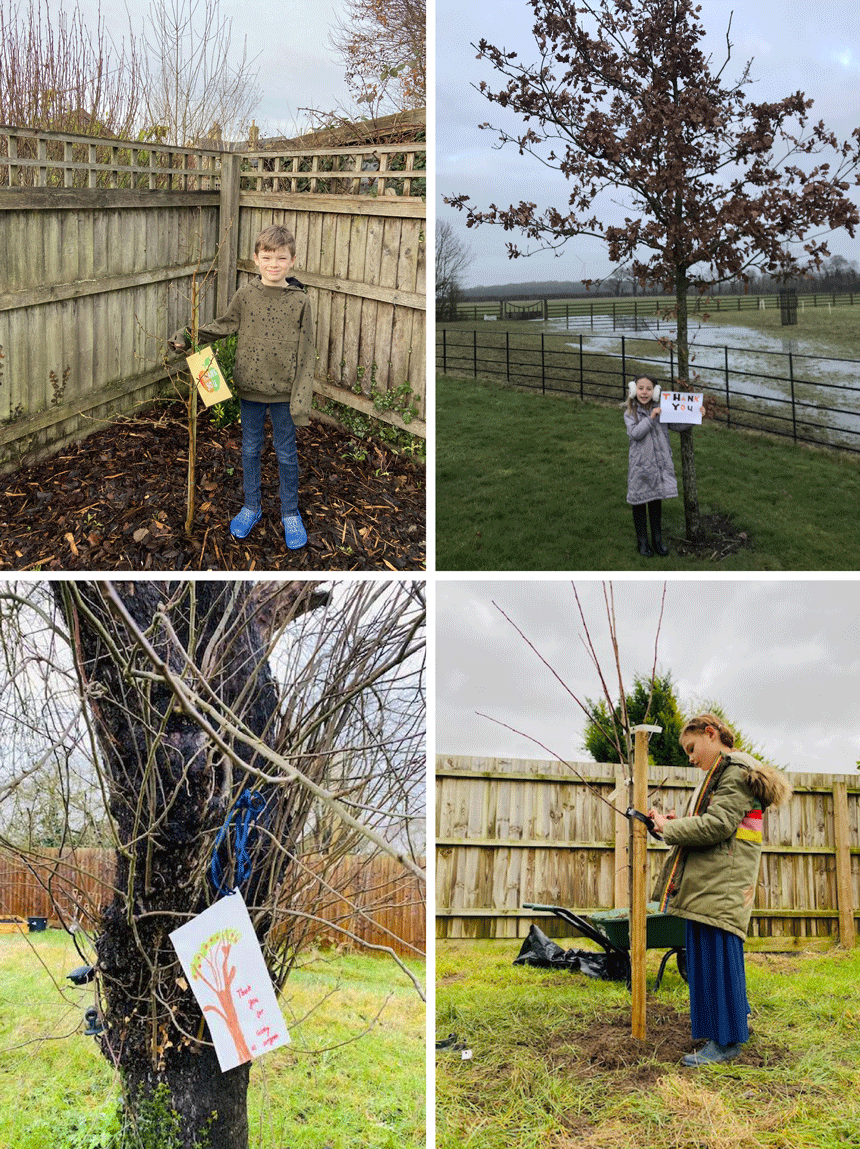As part of their Humanities remote learning project, Form 1 identified different types of trees, discovered what trees do for us and how we can all become 'tree heroes' to help protect trees and increase the tree canopy in Cambridge and beyond. They also learned about the different types of forest in the UK, what grows and lives there, and made their own woodland models reflecting the different forest layers. As a culmination of their project, the children wrote thank you cards which they hung from their chosen tree.

Form 1 started their project by using their pre-existing knowledge to name different types of trees which then progressed to studying images of trees and playing the game, ‘name this tree’. They spent time researching different UK trees and looked at the Woodland Trust clip: ‘A year in the life of the Horse Chestnut Tree’. Their first outdoor activity was to choose a tree in their garden or near their home, spend time looking at it carefully, feeling the leaves, the bark and the twigs mindfully and trying to identify what type of tree is it. Some children took photos or created an observational drawing or a leaf and bark rubbing. The children also used a Winter Tree identification sheet and some used the Woodland Trust tree app when they were next on a family walk. Some children took their investigations further by going on the Cambridge City Council's Tree Trails and others watched one virtually. This coincided with the Cambridge City Council’s ‘Cambridge Canopy Project’ and, as the USDA Forest Service remarked, ‘The tree in front of my home is a word, the trees on my street are a sentence, the trees in my neighbourhood are a paragraph and all our trees in the community are a story.’

Form 1 learned that trees are the planet’s strongest warriors against climate change as they lock up carbon, fight flooding and cool cities. They also provide shelter and shade and are homes to wildlife and are an essential source of food for animals and insects. Twigs are used to make nests and for hibernating animals and hollows and crevices provide nesting places. The children wrote ‘the story of the tree’ by imagining what its memories and hopes are for the future and what it has experienced over a lifetime. Form 1 also discovered how to calculate the age of a tree by counting its ‘growth rings’. As a counterbalance, the children also found out what humanity can do to help trees and, as part of the Cambridge Canopy Project, Form 1 designed their own Tree Hero after they found out that the aim is to grow the city’s urban forest and increase Cambridge’s tree cover by 2% by planting new trees and protecting existing ones such as the ash tree which is threatened by ash dieback which is killing 80% of this type of tree.

The UK's woodlands are rich and diverse and support more invertebrates than any other habitat. From temperate forests to orchards and native conifers, each one is varied and complex and is shaped by geology, soils, climate and people over generations. Having selected one woodland to research, the children discovered the types of trees and plants growing in this habitat and what you might find in each of the four layers (ground, field, understorey or shrub and canopy). As a culmination of this project they created their own 3D woodland model to highlight their research and thought about which season would be represented. They also wrote persuasive paragraphs in their woodlands scrapbooks to encourage people to visit their woodland and to treat nature responsibly. One Form 1 commented, 'It was a good project to learn more about how each person can make a difference to climate change by recycling paper, planting trees and protecting the ones that are growing and being our own tree heroes.'